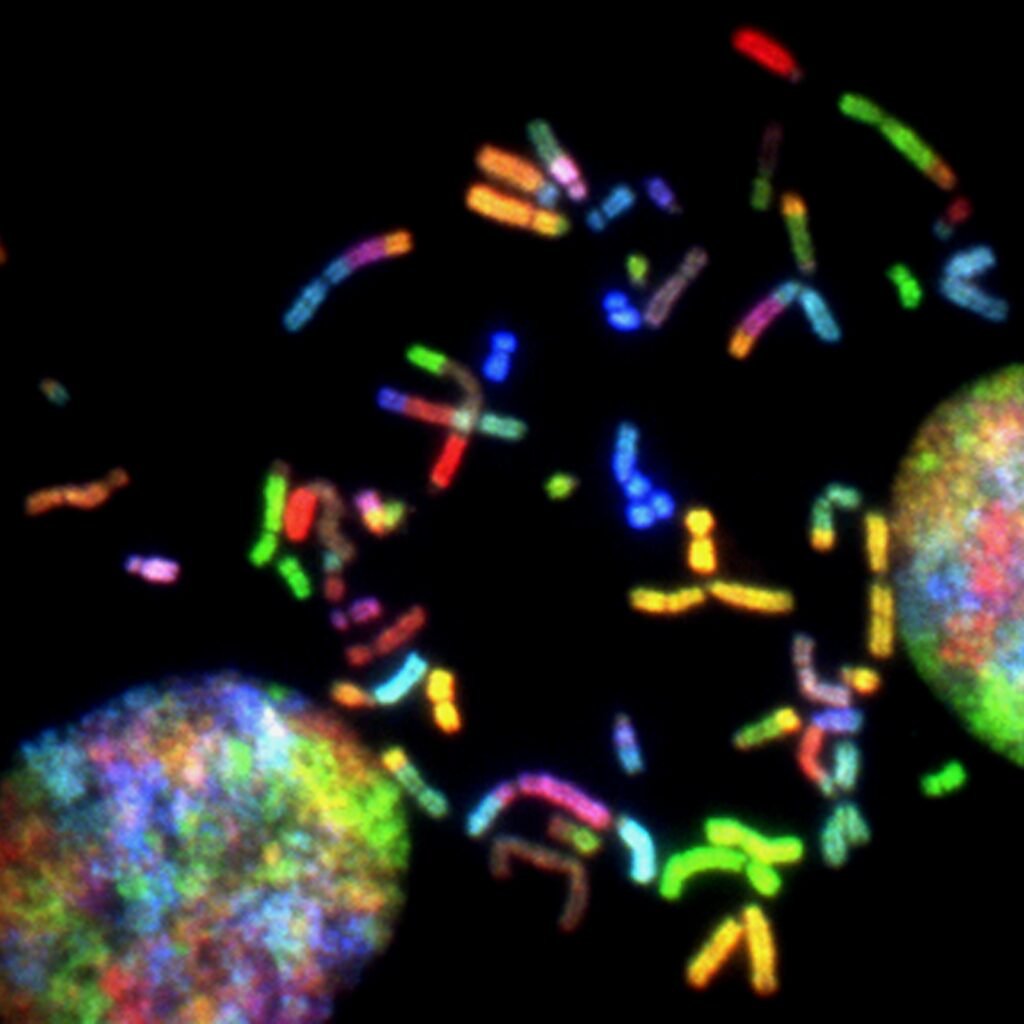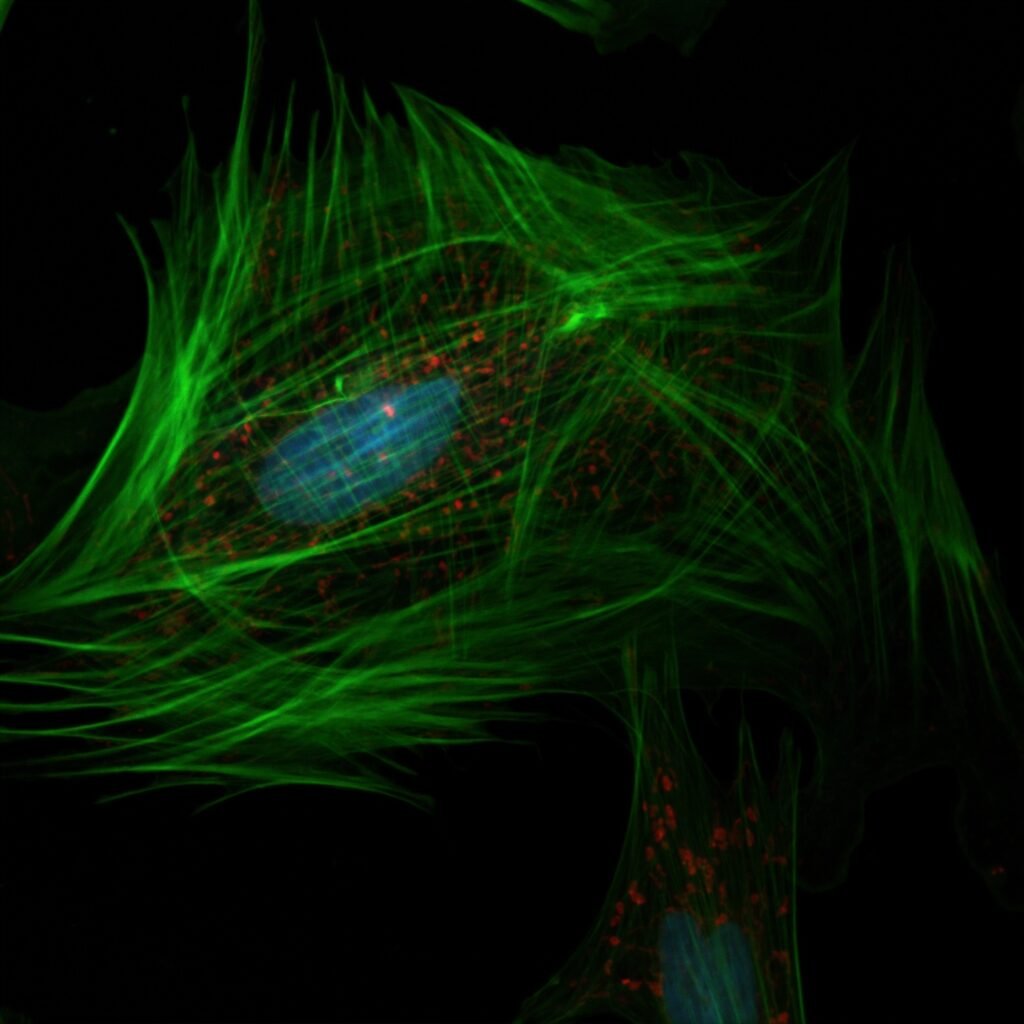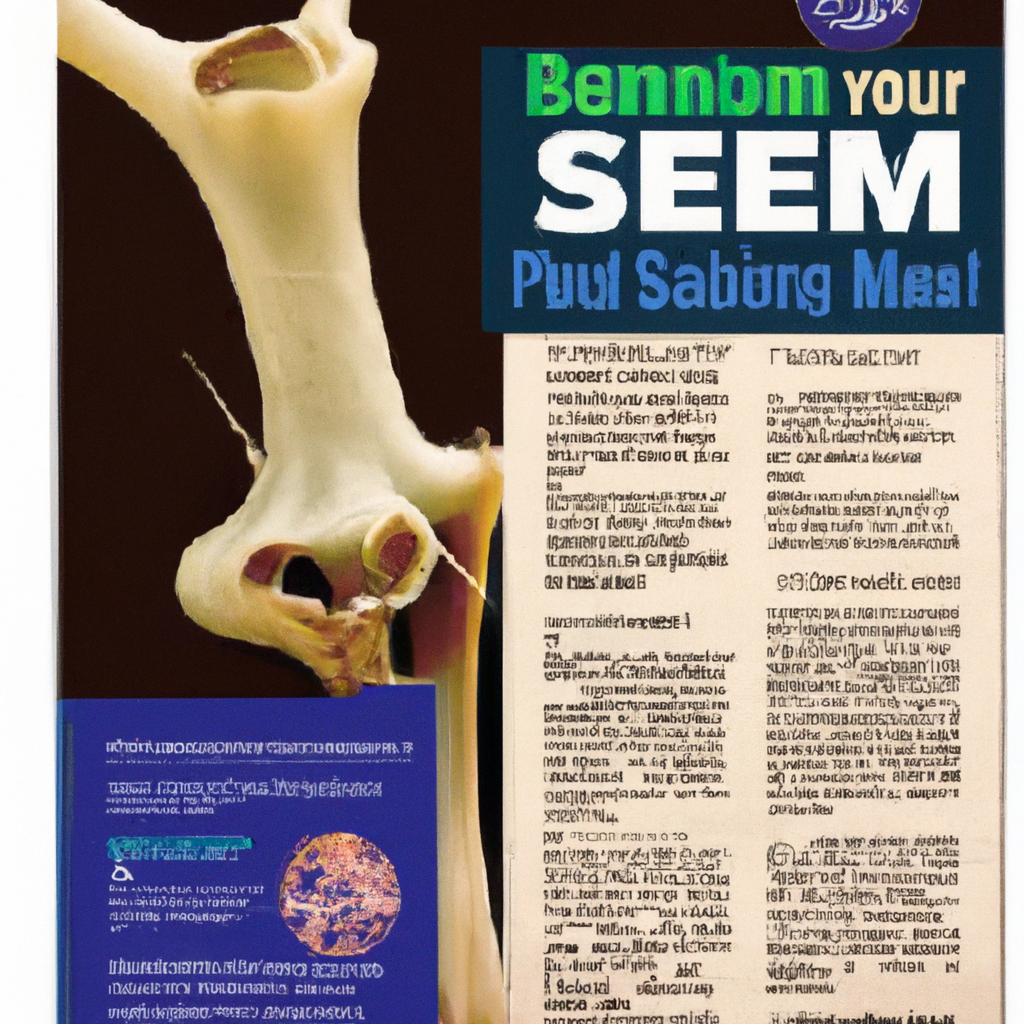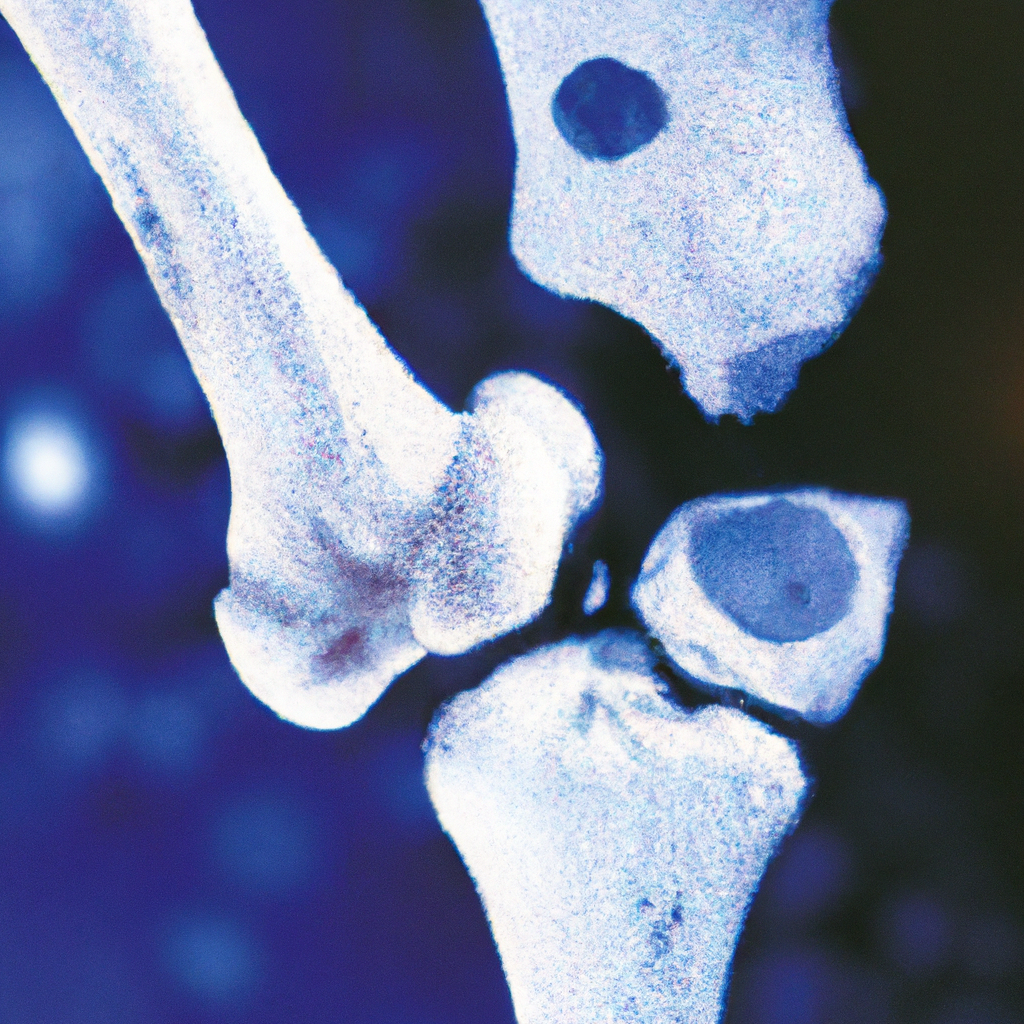Have you ever wondered about the fascinating world of stem cells and their role in regenerating bone tissue? Join us as we explore the groundbreaking research happening in Malaysia, shedding light on the incredible potential of stem cells in healing and rejuvenating damaged bones. From understanding the science behind stem cells to examining their applications in real-life scenarios, this article will take you on a journey of discovery. So, sit back, relax, and let’s delve into the captivating world of stem cell research in Malaysia!

Overview of Stem Cells
Stem cells are undifferentiated cells that have the remarkable ability to differentiate into specialized cell types. They are essential for the development, growth, and repair of tissues in the human body. Stem cell research has gained significant attention in recent years due to its potential for regenerative medicine, particularly in the field of bone tissue regeneration. In Malaysia, stem cell therapy has emerged as a promising treatment option for various bone-related conditions, offering hope to patients who previously had limited treatment options.
Definition of Stem Cells
Stem cells are unique cells that can divide and differentiate into various specialized cell types in the body. They have the ability to self-renew, maintaining a pool of undifferentiated cells, and can give rise to more specialized cells through a process called differentiation. Stem cells are classified into different types based on their origin and potential for differentiation.
Types of Stem Cells
There are several types of stem cells, each with distinct characteristics and potential applications. The main types of stem cells include:
-
Embryonic Stem Cells (ESCs): Derived from embryos, these pluripotent stem cells have the ability to differentiate into any cell type in the body. They have the greatest potential for regeneration but also raise ethical concerns due to their origin.
-
Adult Stem Cells: Also known as somatic or tissue-specific stem cells, these cells are found in various tissues and organs throughout the body. They have a more limited capacity for differentiation but play a crucial role in tissue repair and regeneration.
-
Induced Pluripotent Stem Cells (iPSCs): These are adult cells that have been reprogrammed to have pluripotent characteristics, similar to embryonic stem cells. iPSCs offer the potential to create patient-specific stem cells for personalized medicine.
Characteristics of Stem Cells
Stem cells possess unique characteristics that set them apart from other cell types in the body. These characteristics include:
-
Self-renewal: Stem cells can divide and produce identical copies of themselves, ensuring a constant supply of undifferentiated cells.
-
Differentiation: Stem cells can differentiate into various specialized cell types, such as bone cells, muscle cells, or nerve cells.
-
Plasticity: Some stem cells, known as multipotent or pluripotent stem cells, have the ability to differentiate into multiple lineages of cells.
-
Regeneration: Stem cells play a crucial role in tissue repair and regeneration, replenishing damaged or lost cells.
Regeneration of Bone Tissue
Importance of Bone Regeneration
Bone regeneration is essential for the treatment of various conditions, including fractures, osteoporosis, and bone defects. The traditional methods of bone regeneration, such as autografts and allografts, have limitations in terms of availability, donor site morbidity, and immune rejection. Stem cell-based therapies offer a promising alternative for bone regeneration, providing a renewable source of cells that can differentiate into bone-forming cells and promote tissue repair.
Challenges in Bone Regeneration
Despite the potential of stem cell therapy in bone regeneration, there are several challenges that need to be addressed. Firstly, the limited availability of suitable stem cell sources for transplantation is a significant hurdle. Additionally, there is a need for efficient methods to induce the differentiation of stem cells into bone-forming cells. Moreover, the precise control of the tissue microenvironment and the integration of newly formed bone with the existing tissue are critical factors for successful bone regeneration.
Role of Stem Cells in Bone Regeneration
Stem cells play a crucial role in bone regeneration by providing a cellular source for tissue repair and promoting the formation of new bone. They can differentiate into osteoblasts, the cells responsible for bone formation, and facilitate the deposition of mineralized bone matrix. Moreover, stem cells can secrete growth factors and cytokines that stimulate angiogenesis, the formation of new blood vessels, to support bone regeneration. Through their various mechanisms, stem cells contribute to the healing of bone defects and the restoration of skeletal function.

Stem Cell Sources in Malaysia
In Malaysia, several sources of stem cells are being explored for their potential in bone regeneration. These include adult stem cells, embryonic stem cells, and induced pluripotent stem cells.
Adult Stem Cells
Adult stem cells can be isolated from various tissues in the body, such as bone marrow, adipose tissue, and dental pulp. In Malaysia, bone marrow-derived stem cells have been extensively studied for their regenerative potential in bone tissue engineering. These cells can be easily harvested and expanded in the laboratory before transplantation into the site of bone defect, promoting bone formation and repair.
Embryonic Stem Cells
Embryonic stem cells, derived from early-stage embryos, have the unique ability to differentiate into any cell type in the body. While their potential for bone regeneration is promising, the use of embryonic stem cells raises ethical concerns due to the destruction of embryos during the derivation process. Nonetheless, ongoing research seeks to explore ways to utilize these cells ethically and safely for bone regeneration in Malaysia.
Induced Pluripotent Stem Cells (iPSCs)
Induced pluripotent stem cells are generated by reprogramming adult cells to revert to a pluripotent state, similar to embryonic stem cells. Malaysia has made significant progress in the field of iPSC research, utilizing patient-specific cells to develop personalized therapies for bone regeneration. By reprogramming the patient’s own cells, iPSCs offer the potential for improved compatibility and reduced immune rejection in bone regeneration treatments.
Research and Clinical Trials in Malaysia
Current State of Stem Cell Research
Malaysia has been actively involved in stem cell research, with numerous research institutions and universities dedicated to advancing the field. The country has made significant strides in understanding stem cell biology, optimizing differentiation protocols, and exploring novel stem cell sources for regenerative medicine applications. This research has laid the foundation for the translation of stem cell therapies from the laboratory to the clinic.
Advancements in Bone Regeneration
In Malaysia, research efforts have focused on the development of innovative strategies for bone regeneration using stem cells. Scientists and clinicians have been investigating various approaches, including the use of scaffolds and growth factors, to enhance stem cell-mediated bone repair. These advancements aim to improve the efficiency and effectiveness of bone regeneration techniques, with a focus on achieving long-lasting functional outcomes.
Clinical Trials on Stem Cell Therapy for Bone Regeneration
A number of clinical trials are underway in Malaysia to evaluate the safety and efficacy of stem cell therapies for bone regeneration. These trials aim to assess the potential of stem cells in treating bone defects, non-union fractures, and osteonecrosis. By monitoring patient outcomes and analyzing the regenerative capacity of stem cells, these trials provide valuable insights into the clinical application of stem cell-based therapies in Malaysia.

Stem Cell Techniques for Bone Regeneration
Various stem cell techniques are being explored in Malaysia to enhance bone regeneration. These techniques aim to optimize the differentiation of stem cells into bone-forming cells and promote the integration of newly formed bone with the existing tissue.
Osteogenic Differentiation of Stem Cells
One of the key techniques employed in stem cell-based bone regeneration is osteogenic differentiation, which involves guiding the differentiation of stem cells into osteoblasts, the cells responsible for bone formation. Scientists in Malaysia have been exploring various methods to induce the osteogenic differentiation of stem cells, including the use of specific growth factors and biomaterial-based cues. These techniques aim to enhance the bone-forming capacity of stem cells and accelerate the healing process in bone defects.
Scaffold-based Approaches
Scaffolds play a critical role in guiding the growth and differentiation of stem cells for bone regeneration. In Malaysia, researchers have been developing and optimizing scaffold-based approaches for efficient stem cell delivery and integration with the surrounding tissue. These scaffolds provide structural support, mimic the natural bone environment, and promote the formation of new bone. By combining stem cells with biomimetic scaffolds, researchers aim to create a favorable microenvironment that enhances bone regeneration and functional recovery.
Gene Therapy for Bone Regeneration
Gene therapy holds great potential for enhancing bone regeneration using stem cells in Malaysia. Researchers have been investigating the use of gene-modified stem cells to deliver therapeutic genes directly to the site of bone defect. This approach allows for the targeted expression of growth factors and other molecules that promote bone formation, enhancing the regenerative capacity of stem cells. By harnessing the power of gene therapy, scientists in Malaysia aim to develop more effective and personalized treatments for bone regeneration.
Success Stories in Malaysia
The use of stem cell therapy for bone regeneration in Malaysia has yielded promising results, with several success stories showcasing the potential of this innovative treatment approach.
Patients’ Experiences with Stem Cell Therapy
Patients who have undergone stem cell therapy for bone regeneration in Malaysia have reported significant improvements in their condition. Personal testimonies highlight reduced pain, accelerated healing, and improved functional outcomes following stem cell treatments. Individuals who were previously limited in their daily activities due to bone-related issues have reported a restoration of quality of life after undergoing stem cell therapy.
Case Studies of Successful Bone Regeneration
Numerous case studies in Malaysia have demonstrated successful bone regeneration using stem cell-based therapies. These cases often involve patients with complex bone defects or non-union fractures, where conventional treatment options have been unsuccessful. Stem cell therapy has shown the ability to stimulate bone formation and promote the healing of these challenging cases, offering new hope for patients who may have otherwise faced disability or amputation.
Expert Opinions on Stem Cell Applications
Experts in stem cell research and regenerative medicine in Malaysia have expressed optimism regarding the applications of stem cells in bone regeneration. They believe that stem cell therapy holds great potential for revolutionizing the field of orthopedics and improving patient outcomes. However, they also emphasize the need for rigorous scientific research and careful evaluation of safety and efficacy before widespread implementation of stem cell-based therapies.

Safety and Ethics in Stem Cell Research
Ensuring the safety and ethical considerations of stem cell research and therapy is of utmost importance in Malaysia. The country has implemented a regulatory framework and guidelines to govern the use of stem cells in research and clinical applications.
Regulatory Framework and Guidelines
Malaysia’s Ministry of Health has established regulations and guidelines to ensure the ethical and safe use of stem cells. These regulations govern the collection, processing, storage, and transplantation of stem cells, ensuring that they meet the required standards. The guidelines also outline the informed consent process, patient eligibility criteria, and follow-up procedures to protect the rights and well-being of individuals involved in stem cell research and therapy.
Ethical Considerations in Stem Cell Use
The use of embryonic stem cells raises ethical concerns due to the destruction of embryos. In Malaysia, ethical considerations are carefully evaluated, and alternative sources of stem cells, such as adult stem cells and induced pluripotent stem cells, are explored to avoid these ethical dilemmas. Researchers and clinicians abide by internationally accepted ethical principles, ensuring that stem cell research and therapy adhere to the highest ethical standards.
Risk Assessment and Safety Measures
Safety is a paramount concern in stem cell research and therapy. In Malaysia, extensive risk assessment is conducted to evaluate the safety profile of stem cell-based treatments. Researchers and healthcare professionals follow stringent protocols to minimize the risks associated with stem cell transplantation, including the risk of infection, immune rejection, and tumor formation. Ongoing monitoring and long-term follow-up of patients are essential to assess the safety and efficacy of stem cell therapies for bone regeneration.
Challenges and Future Directions
While stem cell therapy shows great promise for bone regeneration in Malaysia, there are several challenges and areas for future exploration.
Cost and Accessibility
One of the primary challenges in stem cell therapy is the cost and accessibility of treatment. Stem cell-based therapies can be expensive due to the complex laboratory processes involved in producing and expanding stem cells. Ensuring access to affordable stem cell treatments for a wider population remains a challenge. Continued research and technological advancements are needed to optimize manufacturing processes and reduce the overall cost of stem cell therapies.
Long-term Efficacy and Durability
The long-term efficacy and durability of stem cell-based treatments for bone regeneration require further investigation. While short-term results have been promising, long-term studies are needed to assess the longevity of regenerated bone and the functional outcomes achieved. Understanding the optimal combination of stem cell sources, scaffolds, growth factors, and gene therapy approaches will be crucial in maximizing the long-term efficacy and durability of stem cell-based therapies.
Potential for Personalized Medicine
Personalized medicine, tailoring treatments to individual patients’ specific needs, holds great potential in the field of stem cell therapy for bone regeneration. Further exploration of induced pluripotent stem cells and patient-specific cell lines can pave the way for personalized approaches to bone regeneration. Customized treatments that account for differences in patient demographics, disease severity, and genetic variations can lead to improved outcomes and enhanced patient satisfaction.

Public Awareness and Education
To harness the potential of stem cell therapy for bone regeneration, public awareness and education are essential in Malaysia. Efforts are being made to educate the public about the science behind stem cells, their applications in regenerative medicine, and the ethical considerations surrounding their use.
Educational Initiatives on Stem Cells
Various educational initiatives, including workshops, seminars, and public forums, are conducted to educate healthcare professionals, researchers, and the general public about stem cell therapy for bone regeneration. These initiatives aim to provide accurate and up-to-date information, debunk myths and misconceptions, and enhance public understanding of the potential benefits and limitations of stem cell-based treatments.
Community Engagement Programs
Engaging with the community is crucial in promoting a better understanding of stem cell therapy. Community engagement programs, such as public lectures, open days, and interactive sessions, allow the public to interact with scientists, clinicians, and patients who have undergone stem cell therapy. These programs foster dialogue, address concerns, and provide valuable insights into the impact of stem cell therapy on patients’ lives.
Addressing Misconceptions and Myths
Misconceptions and myths surrounding stem cell therapy can hinder its acceptance and utilization. Efforts are being made in Malaysia to address these misconceptions and provide evidence-based information to the public. By creating awareness about the rigorous scientific research and ethical considerations in stem cell therapy, the public can make informed decisions and have realistic expectations regarding its potential benefits.
Collaboration and International Partnerships
Collaboration and international partnerships are pivotal in advancing stem cell research and therapy for bone regeneration in Malaysia. By leveraging expertise and resources from international institutions, Malaysia can accelerate its progress in this field and contribute to global scientific advancements.
Malaysia’s Collaboration with International Institutions
Malaysia actively collaborates with renowned international research institutions and universities to foster knowledge exchange and collaboration. Joint research projects, collaborative studies, and scientific conferences provide opportunities for researchers and scientists in Malaysia to collaborate with experts from around the world. These collaborations promote innovation, facilitate access to cutting-edge technologies, and enhance the quality of research in stem cell therapy for bone regeneration.
Exchange of Expertise and Resources
Through international partnerships, Malaysia gains access to expertise and resources that can further propel stem cell research and therapy. Sharing knowledge, techniques, and research findings with international counterparts fosters mutual growth and enrichment, ensuring that the latest advancements in stem cell biology and bone regeneration are applied in Malaysia.
Joint Research Projects on Bone Regeneration
Joint research projects between Malaysian and international institutions focus on exploring novel approaches for bone regeneration using stem cells. These collaborative efforts involve interdisciplinary research teams incorporating expertise from various fields, including biology, engineering, and medicine. By pooling resources, skills, and knowledge, these projects accelerate the development of innovative stem cell-based therapies for bone regeneration and pave the way for future clinical applications.
In conclusion, stem cells hold immense potential in regenerating bone tissue in Malaysia. Through extensive research efforts, stem cell therapy for bone regeneration has shown promising results, with success stories and ongoing clinical trials demonstrating its efficacy in restoring bone function. Malaysia’s focus on ethical considerations, safety measures, and regulatory frameworks ensures the responsible utilization of stem cells in research and therapy. With future advancements, collaboration, and public awareness, stem cell-based treatments have the potential to revolutionize bone regeneration, providing improved outcomes and quality of life for patients in Malaysia and beyond.




